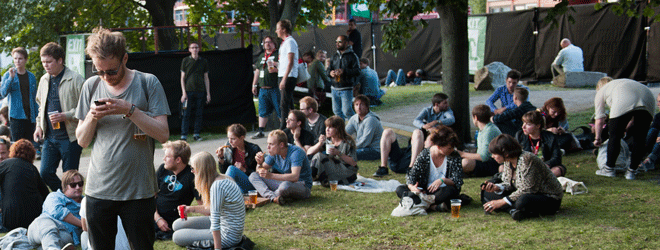For the first time, independent researchers have now studied how we use digital music services. In the project Clouds & Concerts: Trends in Music Culture the researchers were granted access to the Wimp/Tidal streaming service.
One of the findings is that fully 92 per cent of the playlists people make for themselves in Wimp are never shared with others.
‘This came as a surprise to us. One of the new features that the streaming services provide is to permit sharing of music to a greater extent than before. Virtually all streaming services facilitate sharing. This opportunity is rarely used, however. People don’t want to share their taste in music with others, says Arnt Maasø, associate professor at the Department of Media and Communication
He has headed the project with professor Anne Danielsen at the Department of Musicology.
Selective sharing of music

This access to a large streaming service provided completely new insights, to the researchers as well as to the music industry.
‘Our previous knowledge about streaming patterns was only random pieces of the puzzle that had been generated by the streaming services themselves. No major available analyses have been made of the way in which people listen to streaming services,’ Maasø explains.
As part of the project, twelve users of Spotify and Wimp were followed closely over time, and 124 users of streaming services were interviewed in groups. Here, PhD candidate Anja Nylund Hagen and researcher Marika Lüders investigated how we share music, if at all.
‘Those who share music have a great deal of social awareness of what they want to share or not. For example, it is common to turn the button that shows what is playing at the moment on and off. When people are cleaning the floor while listening to things they would not want to admit to, such as Justin Bieber, they turn it off. If they are hooked on a song and listen to it again and again, they also turn it off,’ says Anja Nylund Hagen.
Music becomes part of the personality
Most of those who were followed or interviewed by the researchers thus chose to keep their music to themselves. Many explained this by stating that their music is of no concern to others, it is only their own.
This may possibly explain the stream of protests that Spotify received some years ago, when the sharing of playlists via Facebook was a default setting for the use of their streaming service. Spotify later changed this setting, so that those who wanted to share music needed to do so manually.
‘We listen to music in many situations during an ordinary day. Music accompanies us from morning until night, through our changing moods, emotions and daily settings. It becomes virtually an extension of ourselves, a part of our personality that we don’t want to share,’ says Nylund Hagen.
She believes that this linkage of music to everyday activities tends to reinforce the musical experience.
‘Music is not only background noise that we turn on and off. It helps to shape our everyday experiences.’
A signal to the environment

Project director Anne Danielsen points out that music may evoke strong emotions in a very personal manner, but may also be a method for signalling an identity to the environment.
‘Occasionally, the music that elicits a strong emotional response and brings back intense personal memories may not fully concur with the identity that we wish to signal to others. In this case, I believe that we may choose not to share, in order to protect our personal space,’ Danielsen says.
Many informants also felt that the sharing function was an irritant because it generated a lot of noise. The regarded it as one element of online information that they did not want to relate to.
However, there was also a small group that shared everything they listened to. The researchers believe that these may be opinion leaders who wish to project a public musical identity, that they have sufficient self-confidence not to care, or that they are unfamiliar with the technology and how to handle the settings.
Listening habits are influenced by major events
The research project has consisted of two main components: while one part has focused on cloud streaming services and music, the other has investigated the importance of live music performances and the experience of it in contemporary music culture. Today, there is a strong growth in music festival attendance.
The researchers have also examined the association between live music and streaming. These studies have shown, for example, that a large festival such as the ‘Øya’ festival in Oslo gives rise to a strong growth in streaming of the festival artists in the weeks around the festival itself. This and the increase in streaming associated with other major media events have led the researchers to refer to an ‘eventization’ of music listening.
‘A successful festival appearance, the death of a major artist, the launch of the entire Beatles back catalogue – a number of such events help call our attention to these artists. Now, everybody has the same access to music in their pocket and can listen to the same music. In an age where the supply and fragmentation are greater than ever before, we are nevertheless flocking together in more shared musical experiences than in a long time,’ Arnt Maasø concludes.
Clouds & Concerts: Trends in Music Culture
Research (2010-2016) on audiences experience of live music and the use of new digital music services.
- Main findings Closing conference March 2016
Kontakt
Research
- Music and society
- Music technology
- Popular music
- Media Innovation
- Media technology
- Mobile media
